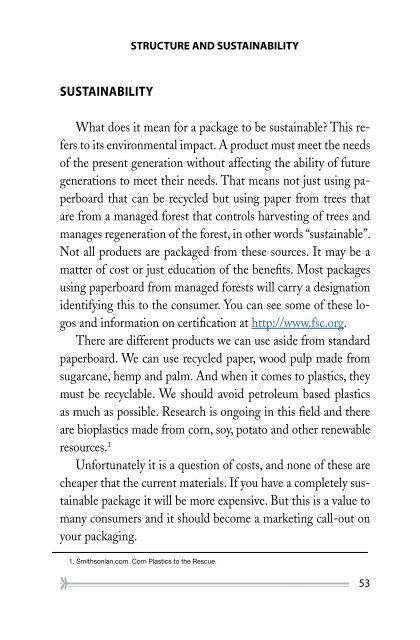The Art of Package Design
There is more to designing a successful package than just making it noticeable. This book explores how to get the most out of the design process and the regulations and legalities required in packaging. It also explores the pitfalls people fall into when trying to create packaging in multi-languages for sale in other markets and cultures. Written by Mark Lehberg, a 30+ year creative professional, this book offers creative insights and tips to create that perfect package.
There is more to designing a successful package than just making it noticeable. This book explores how to get the most out of the design process and the regulations and legalities required in packaging. It also explores the pitfalls people fall into when trying to create packaging in multi-languages for sale in other markets and cultures. Written by Mark Lehberg, a 30+ year creative professional, this book offers creative insights and tips to create that perfect package.
You also want an ePaper? Increase the reach of your titles
YUMPU automatically turns print PDFs into web optimized ePapers that Google loves.
STRUCTURE AND SUSTAINABILITY<br />
SUSTAINABILITY<br />
What does it mean for a package to be sustainable? This refers<br />
to its environmental impact. A product must meet the needs<br />
<strong>of</strong> the present generation without affecting the ability <strong>of</strong> future<br />
generations to meet their needs. That means not just using paperboard<br />
that can be recycled but using paper from trees that<br />
are from a managed forest that controls harvesting <strong>of</strong> trees and<br />
manages regeneration <strong>of</strong> the forest, in other words “sustainable”.<br />
Not all products are packaged from these sources. It may be a<br />
matter <strong>of</strong> cost or just education <strong>of</strong> the benefits. Most packages<br />
using paperboard from managed forests will carry a designation<br />
identifying this to the consumer. You can see some <strong>of</strong> these logos<br />
and information on certification at http://www.fsc.org.<br />
<strong>The</strong>re are different products we can use aside from standard<br />
paperboard. We can use recycled paper, wood pulp made from<br />
sugarcane, hemp and palm. And when it comes to plastics, they<br />
must be recyclable. We should avoid petroleum based plastics<br />
as much as possible. Research is ongoing in this field and there<br />
are bioplastics made from corn, soy, potato and other renewable<br />
resources. 1<br />
Unfortunately it is a question <strong>of</strong> costs, and none <strong>of</strong> these are<br />
cheaper that the current materials. If you have a completely sustainable<br />
package it will be more expensive. But this is a value to<br />
many consumers and it should become a marketing call-out on<br />
your packaging.<br />
1. Smithsonian.com. Corn Plastics to the Rescue.<br />
53



